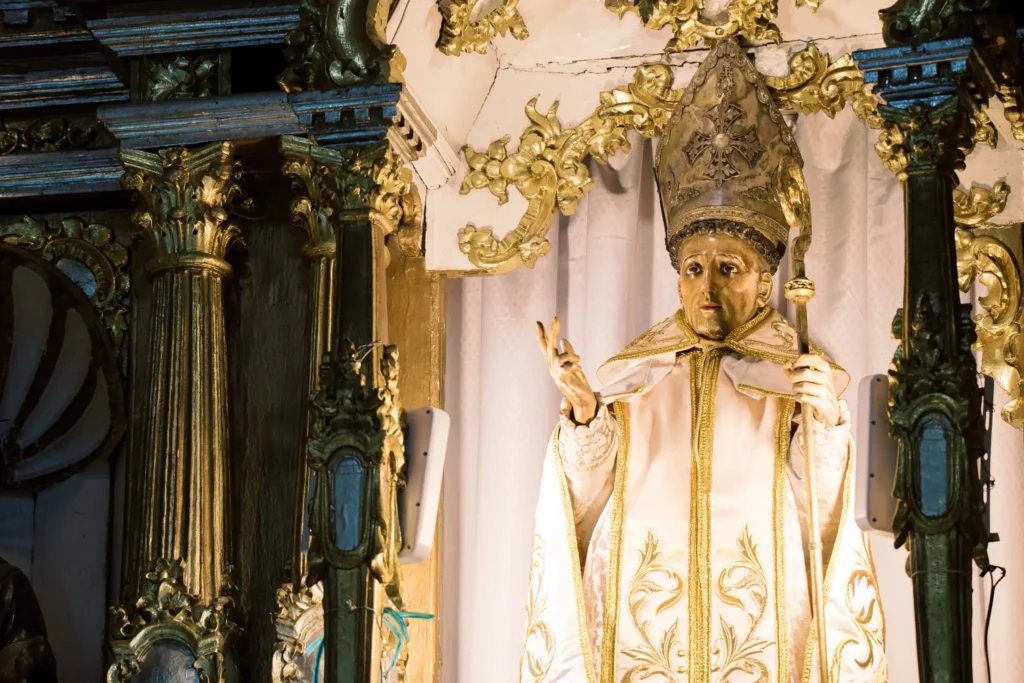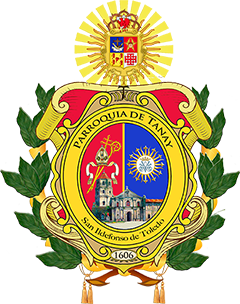FAITH HERITAGE: TRADITIONAL PRACTICES AND ACTIVITIES IN THE PARISH
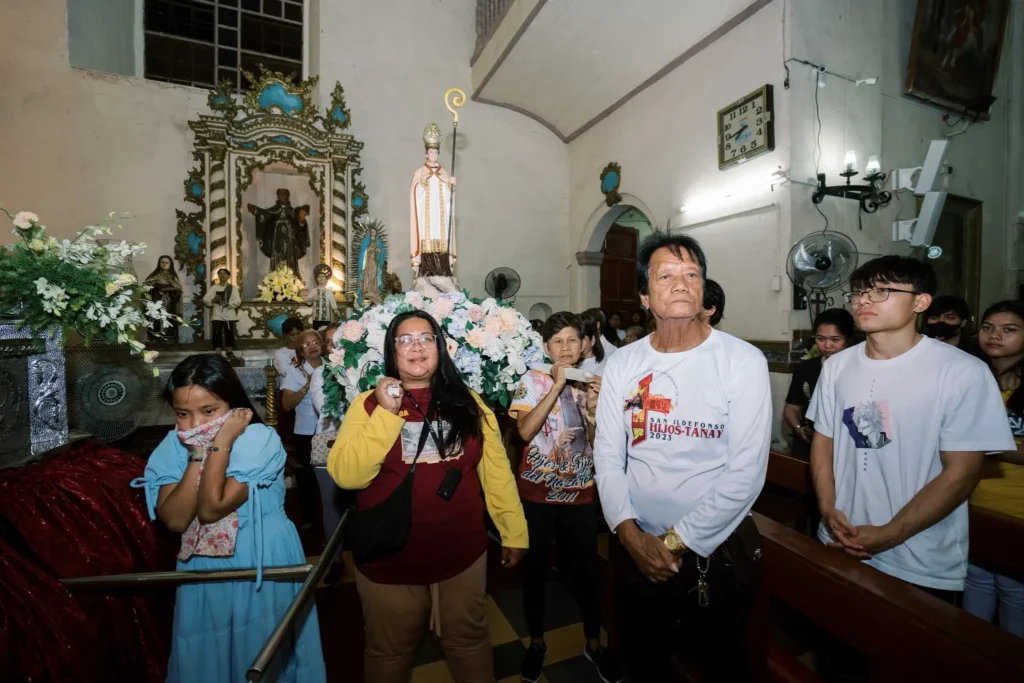
FEAST OF SAN ILDEFONSO DE TOLEDO
The Feast of San Ildefonso de Toledo starts from January 13 to 21 with novena masses for nine days in nine barangays at 7:30 in the evening. A novena is also held at the church after the six o’clock morning Mass.
Amateur singing contests are also held five to six days prior to the feast date of the patron saint.
On January 23, masses are held both in the morning and afternoon. The last morning mass is concelebrated by either the bishop of Antipolo or the Vicar Forane. After the last mass in the evening, the procession follows with the images of San Ildefonso and La Purisima Concepcion.
On January 24, the miracle of the La Purisima Concepcion in Sitio Inalsan is celebrated. Processions are also held in the evening after the holy mass.
Brass bands sponsored by the barangays join the procession. They also play music as they go around the town in the morning.
Parishioners are in a joyful mood whenever the feast of the patron saint comes.
Monthly Devotion To San Ildefonso
Every 23rd of the month, the people of each assigned barangay gather in a specific area for a street mass. Despite the bustling streets, Tanayans gather to pay homage to their beloved patron saint.
The devotion, which has just been recently brought back as tradition, begins with a solemn mass usually held in front of the barangay hall of the assigned barangay for the month. After that, testimonies on the miracles of San Ildefonso in their life were shared by different persons.
Following the short program, a procession is held from the mass site back to the church where the images of San Ildefonso de Toledo and La Purisima Concepcion are included.
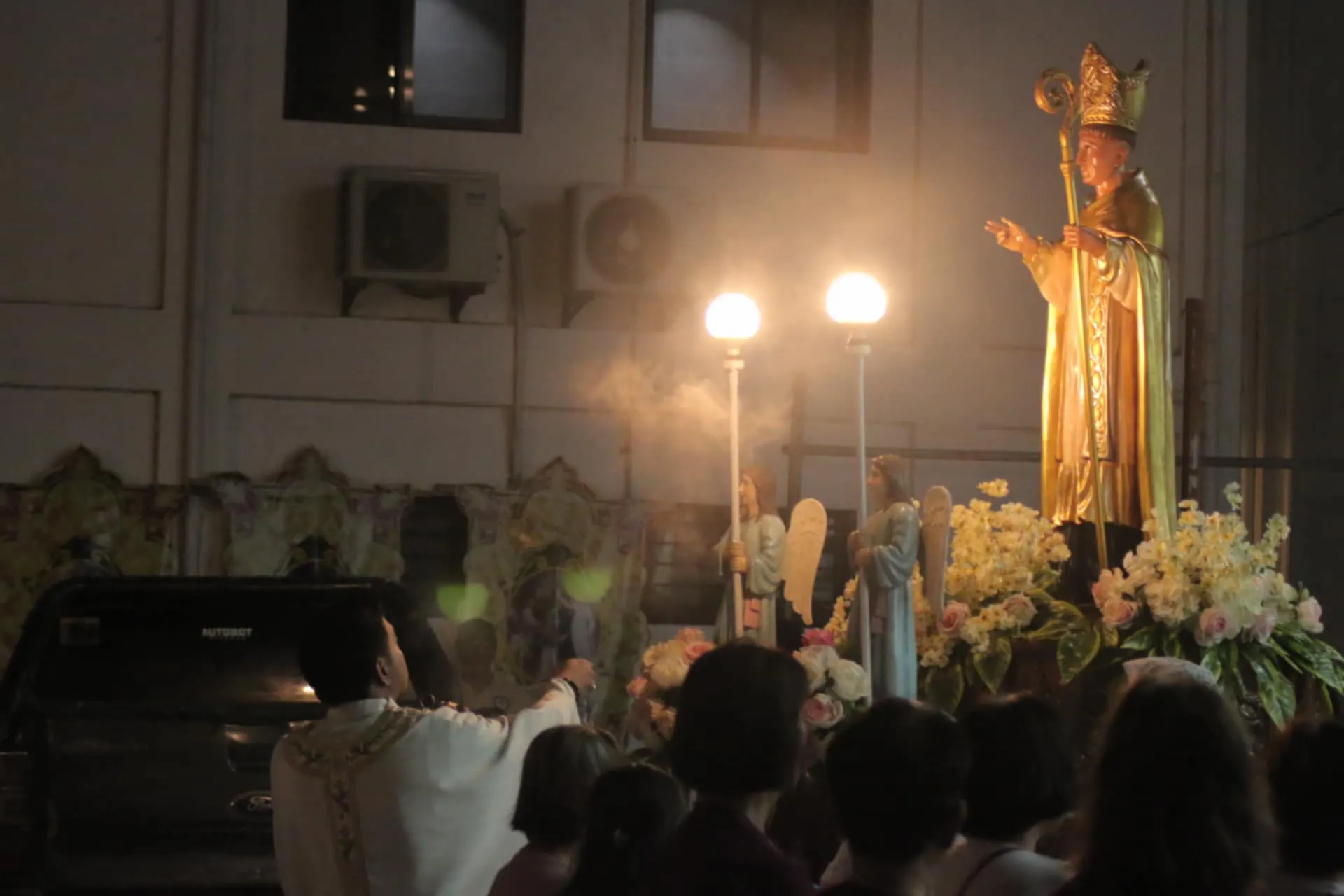
Salubong
Salubong is the meeting of the Resurrected Christ and Our Lady of Resurrection. It is held at around four in the morning in a strategic site selected by the members of the Worship Ministry.
The barangay captain is responsible for setting up the makeshift stage or “kubol” in the chosen site. They also prepare food for the “salubong”. A stage was made over the “kubol” where angels stand and sing “Regina Coeli” while another angel gets the black veil from the image of the Blessed Virgin Mary.
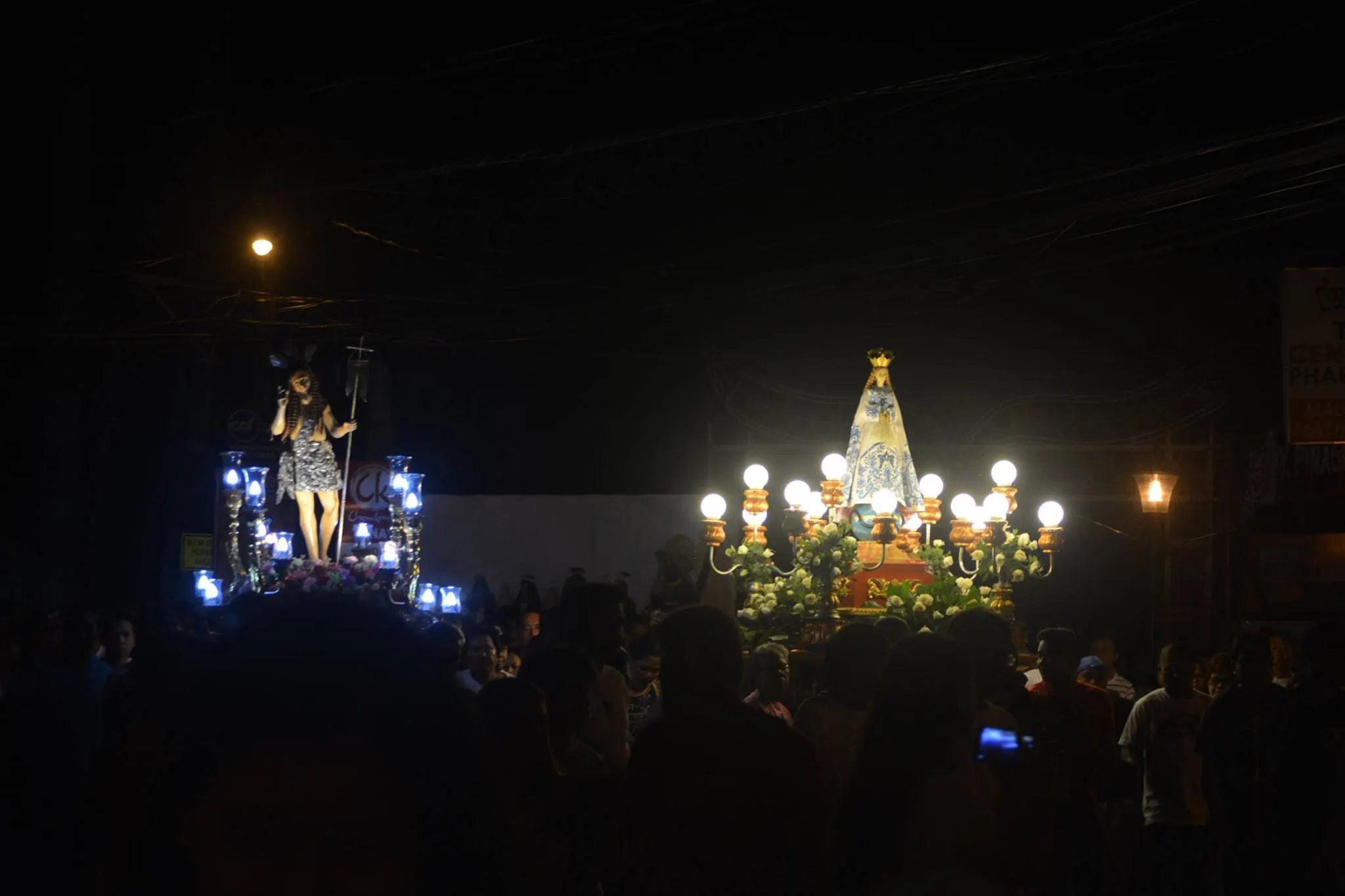
Simbang Gabi
Similar to other parishes in the country and in some countries, the Simbang Gabi, “misa de gallo” or Mass at dawn, goes on for nine mornings.
Back then, a unique tradition in Tanay is held on the Christmas Eve called “Simbang martinez.” Nine small lanterns are carried by “bilanggo” a group of young men and women coming from different barangays. These small lanterns are paraded around the town.
After the parade, the lanterns are hang in a cable that goes from the main retablo up to the choirloft. A bigger lantern called “inahin” is hung in the main altar. During the “Papuri”, all the lanterns are “made to dance” by swinging the strings connected to them. However, due to an incident when one of the small lanterns caught fire while dancing, organizers decided that the tradition be held in the patio.
Nowadays, devotees who cannot be accommodated inside the church can participate in the mass through a live video feed in the patio.

Panunuluyan (Search For An Inn)
Through five centuries of Christianity, the faith of the Filipino people has been sustained mostly by their popular religiosity. A people that responds most effectively to dramatization, symbols and rituals, they have kept and updated through the years.
The Parish Youth Ministry (PYM) started this Filipino tradition. The characters – Joseph and Mary, go around the houses in the barangays near the church, asking the owner for a place to stay in. Their journey commences in the church to the houses. Some members of the group sing Christmas carols to serenade the owner. In response, the owner gives some gifts or financial support for the PYM. After the journey, the group proceeds to the church and concludes the activities by a dramatization of the birth of Jesus.
Panunuluyan reminds us to let Jesus enter in our heart. Let us open our hearts and ask the Lord to enter in.
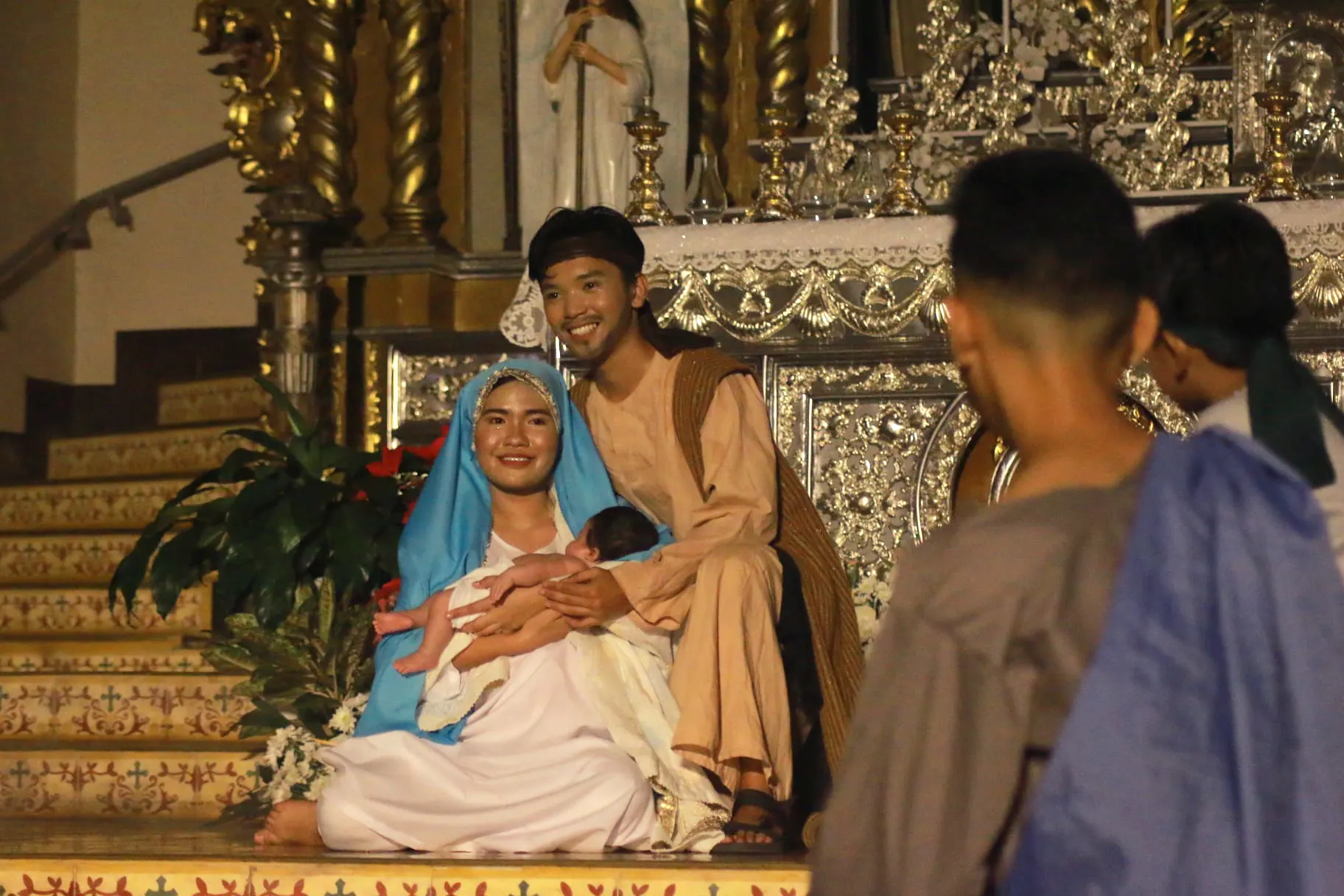
Linggo De Lazaro (Domingo De Lazaro)
An authentic Catholic tradition handed down from the 18th century according to old Tanayan folks is the Domingo de Lazaro (Linggo de Lazaro).
On the fifth Sunday of Lent, Tanayans and the whole Catholic Church recall a significant event in the Bible when Lazarus of Bethany, brother of Martha and Mary was brought to life by Jesus.
During the occasion, families bring different foods to the church and have them blessed after the Holy Mass. In the old days, these foods usually consisting of lumpia (made of singkamas and tokwa) and bukayo (made of young coconut and brown sugar) are usually carried in native calesa and stalled along the corners of the streets in each barangay. Barangay folks line up near the calesa to get a share of the food to be given to a sick member of the family; for they believe the food will cure them. The families who sponsored the food offered this as a thanksgiving for special blessings received from God like good job, cure from a serious illness and passing career examinations.
Today, the tradition is still very much alive, but aside from the traditional lumpia and bukayo, more fiesta foods are added.
This stirs in the people the spirit of service that guided Jesus “to die for His brothers” to give them the eternal gift of salvation.
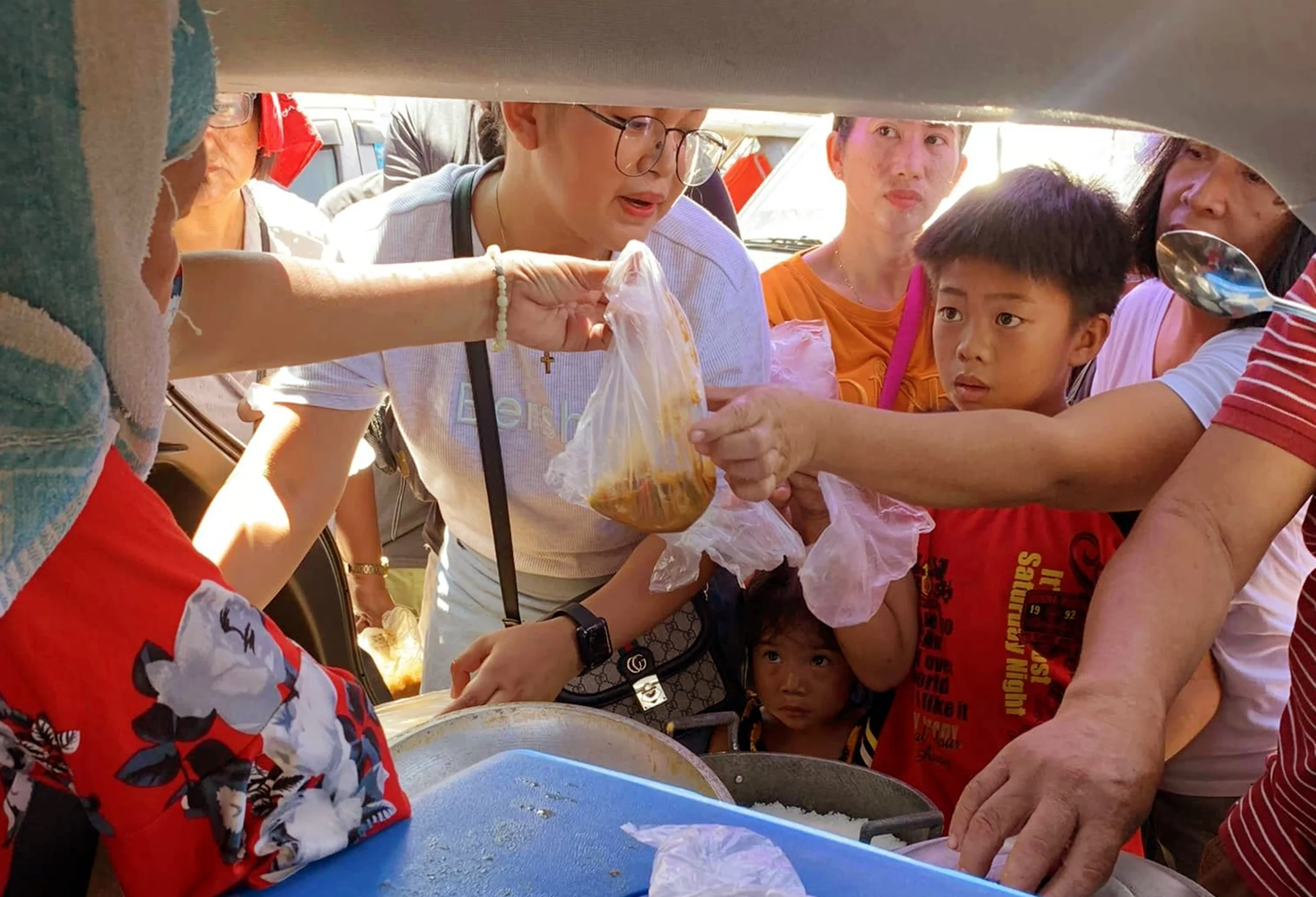
Flores De Mayo
Flores has been a tradition in Tanay for many years. Records show that since 1915, Tanayans have been celebrating this feast and had been holding it even during the war.
The Flores starts on the first day of May where the whole town’s participation can be observed. A certain group (government unit, civic organization, or family) is scheduled every day to offer flowers to Mary.
It used to be that lilies were offered to the Blessed Virgin. Lilies were abundant in Bala-layka in the Alilisan (sugar-cane extraction plant, now part of Sitio Wawa) which was owned by a haciendero named Arsenio Piguing. The sugarcane plantation had lilies planted on both sides which served as a hedge. The flowers were picked and arranged in baskets.
The offering ceremony would start with praying the rosary. Then, a “litanya” (litany) would precede the “Matamis na Birhen.”
The Flores culminates in a grand event held in the third or fourth Sunday of May. On that day, a mass, called “Misa Cantada,” is held in the morning followed by a the grand procession. A short program is held after the procession and is followed by a dinner prepared by the Hermano Mayor.

Founding Anniversary
Every November 12, the parishioners commemorate the founding anniversary of the church, together with the founding of the town. This is also the time when the municipality celebrates its Tanay Hane Festival through various activities such as Grand Peoples Parade and street dancing.
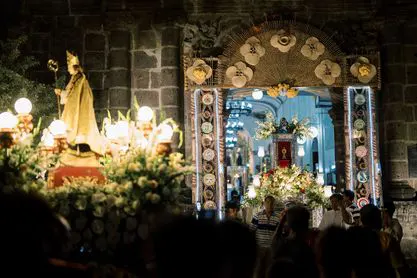
Marian Procession
Tanay is a town that is passionate about its devotion to Mary Mother of God known as “Pueblo Amante de Maria”. Held during the month of May, this event coincides with the celebration of the Flores de Mayo. Similar to the Grand Marian Procession held in Intramuros, this event gathers all the Marian images in Tanay followed by a procession of the revered images around the town.
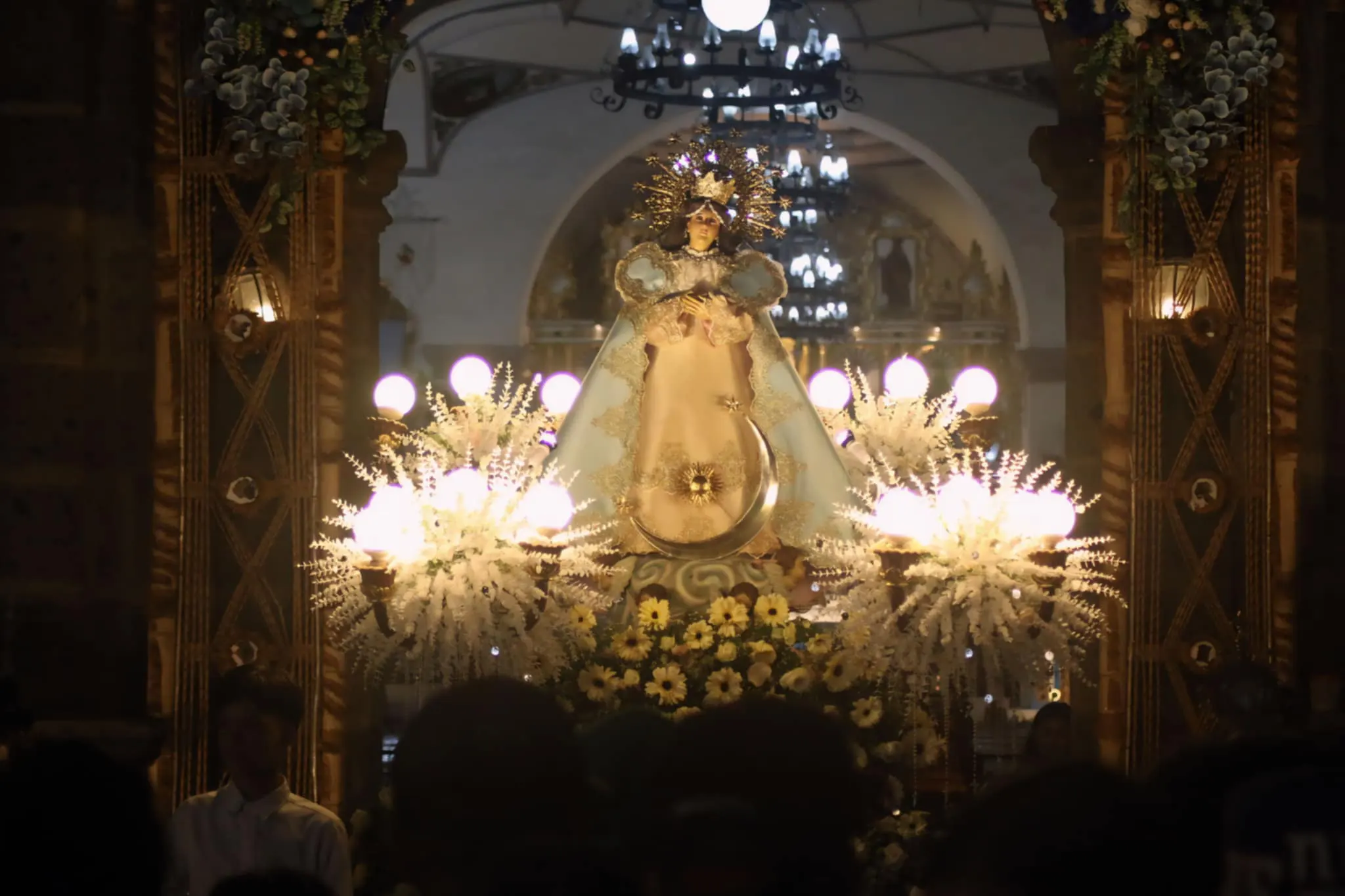
Ahunan sa Antipolo
Longest Pilgrimage Season in The Philippines: The International Shrine and Cathedral of Our Lady of Peace and Good Voyage initiated this season for the devotees of Mary, Mother God. The San Ildefonso Parish participated in this activity just like Mary who gave birth to Christ, Mary also gave birth to us human in a sense of guiding us and granting our prayer.
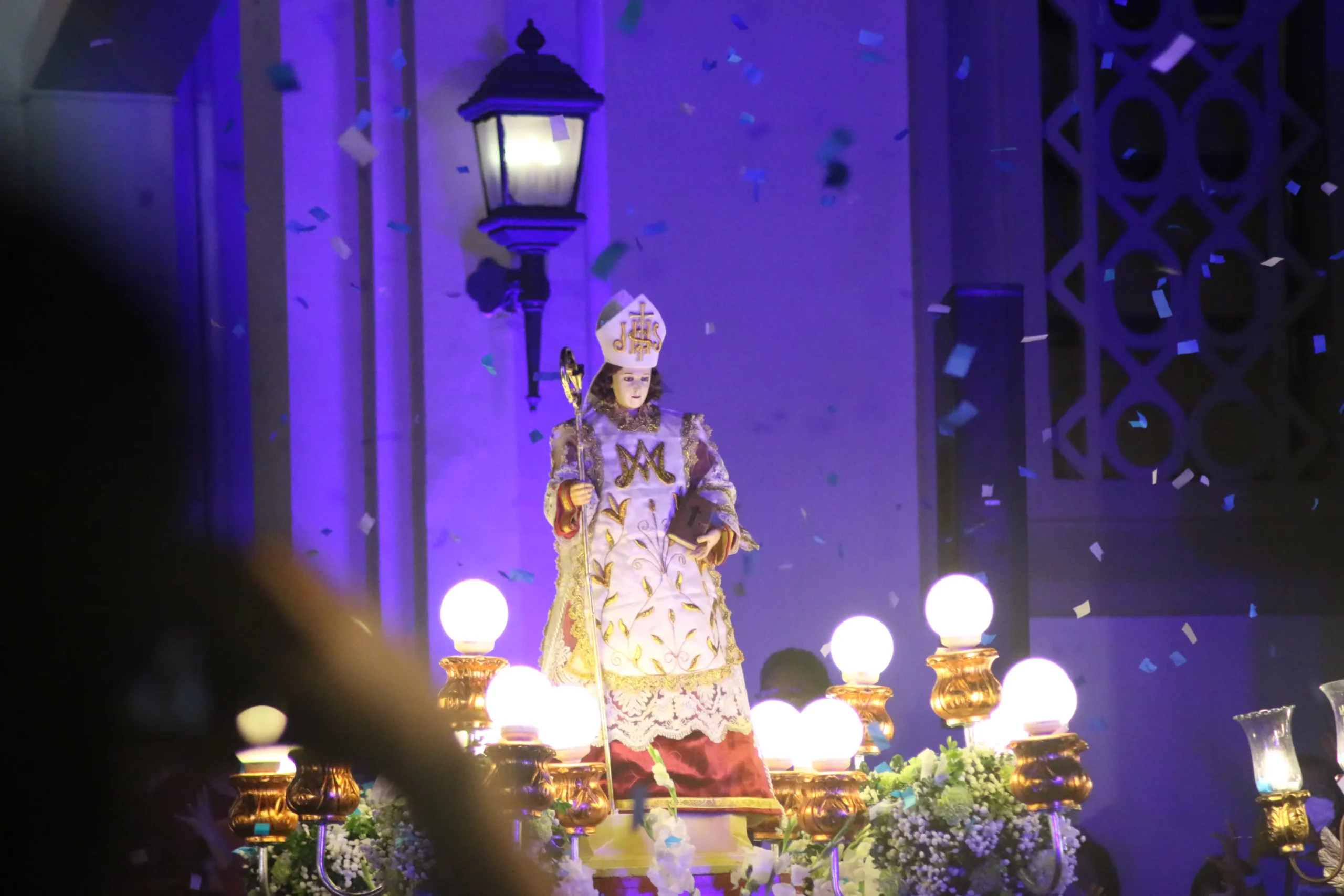
Holy Week
During the holy week, our church is one of the pilgrimage churches in the Diocese because of its structure that brings back the people in Jesus Christ’s time and is a good place to repent. Also, processions with the Images of the Passion and Death of Christ, and all other holy saints, are held every Holy Wednesday, Good Friday, and Black Saturday in commemoration of the passion of our Lord.
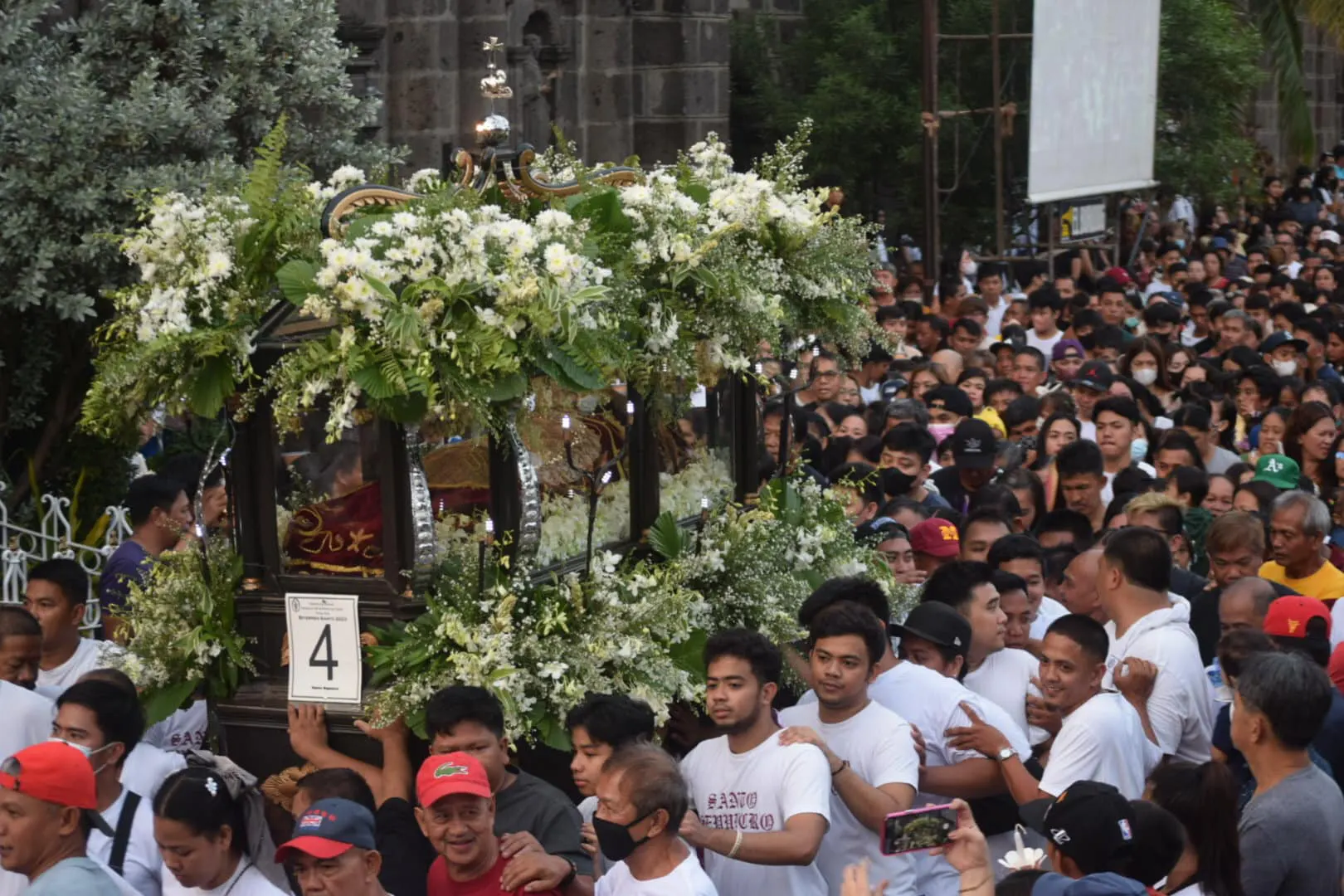
The Clothes For San Ildefonso
